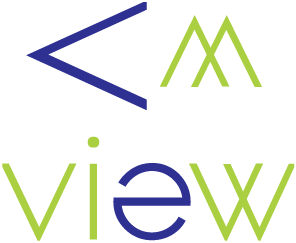How to simplify your Operation and Maintenance Manual Process
Summary
In this article you will learn about:
- What an Operation and Maintenance Manual (O&M) is and why they are important.
- What should be included within the manual.
- How to ensure all information is received from a sub-contractor.
- How to make sure all information is up-to-date and present.
- Our solution to simplify the process and storing your building information online.

What is an O&M Manual and why is it important?
What is an O&M Manual?
In the world of construction and facility management, the Operation and Maintenance (O&M) Manual is a cornerstone document. It's a comprehensive guide crucial for the smooth operation, maintenance, and eventual decommissioning of a facility. Think of it as the ultimate guidebook for maintaining and operating a building after construction is complete. These manuals often include as-built drawings, operating procedures, warranties, and test information, making them indispensable for ensuring safety and compliance with legal requirements.

What is the purpose of the manual?
What is the purpose of the manual?
The primary goal of an O&M Manual is to equip facility management teams with the necessary information for effective maintenance and management of a facility or property.
Who is responsible for preparing the manual?
During a construction project, the responsibility for preparing the Manual typically falls to the contractor who carried out the work. However, the principal designer has the duty under contract to ensure the provision of these manuals.
Is it a legal requirement?
The production of an O&M Manual by the contractor is not just a procedural necessity but also a legal requirement. The principal designer plays a pivotal role in ensuring these manuals are provided.
Importance of Accurate Information.
Correct and accurate information relevant to the operation and maintenance of a building will ensure that activities are undertaken safely and not result in injury or death that could ultimately result in a corporate or personal manslaughter charge.
The fact that a project may be complete does not remove obligation from the initial constructor, operator or owner from responsibilities under law.
What should be included?
The information required for creating an O&M Manual is dependent on both the type of works and the contractual requirements. Engineering works will be required to include extra information such as an asset register and operating instructions whereas Finishes, or Structural, Fabric and Externals (SFE) packages will only require the essentials.
Here is our list of what is required for each group:
Finishes/SFE
- Project definitions e.g. project address, client details, quantity surveyor details etc.
- Manual amendments schedule.
- Schedule of design 'For Construction' documents used for the works.
- Scope of works. Tip: The scope of works should not be mistaken for the specification, as the scope of works needs to be what has been done not what will be done.
- Directory of suppliers. This schedule must both include the contact details for the supplier and the item/service they supplied.
- Schedule of materials. This must include: the item and its product reference, the supplier, the project reference for item, the colour/finish and its location.
- Spares and recommended spares schedule if spares are included within your contract.
- Maintenance procedures and hazards.
- Cleaning information.
- Health and safety information. This would include emergency contacts, general health and safety, modification and disposal instructions, hazardous materials, residual hazards and health and safety datasheets.
- Record drawings/As-built drawings. If it is not a contractual requirement to produce record/as-built drawings, you should instead include a list of design 'For Construction' drawings worked to.
- Test information if applicable to your works.
- Manufacturers literature for all products used.
- Contractual and manufacturer’s warranties.
Engineering
An engineering O&M will include all the items in a Finishes/SFE Manual with the following additional content:
- Contractor design information.
- Detailed operating instructions and procedures for daily operations.
- Schedule of materials must also include further item details including voltage, accessories, spares, specific health and safety information etc.
- Instruction for the safe isolation of equipment.
- Fault finding advice.
- Schedule of special tools and test equipment.
- Specific specialist examination and test regime advice.
- Asset register.
- Fault finding advice.
- Further work specific health and safety information.
- Distribution board schedule
For more tips, see our top 10 common errors article.
How to make sure all information is correct and kept up to date.
How to make sure all information is received from a sub-contractor?
Although under contract the responsibilities of ensuring provision of O&M Manual's falls to the principal designer. This is often passed down the contract chain resulting in poor or inadequate quality of information which is only discovered during occupation and all parties then pointing fingers at each other. Whereas this may not always be the case, the most effective method of controlling the process is to appoint an independent O&M management company with experience of complex buildings to act as ‘record information gatekeeper/policeman’. They will not ‘author’ the manuals as the accuracy for the information remains with the contract but rather ensure that the client always is aware of the completeness of the process and more importantly gaps in the information both throughout the project and more importantly at time of PC.
This also removes the risk post PC when all contract parties’ minds are on the next project with the next opportunity to review the condition of O&M Manual's at the 12 month defect date and even then, depending upon other pressures, the manual's may never be complete with the errors only being discovered when a crisis arises.
However, even where it is decided there is no need for an independent information gatekeeper, which is normally on the basis of cost, as a proper service is not cheap, there are other measures that can be taken to ensure that the risk, although it may never completely disappear, is minimised.
1. Delivery - Insistence that the delivery of adequate O&M Manual's are a pre-requisite of practical completion. Although this may sound obvious, the fact that they are an end of project activity and differing parties can have an opinion as to what they may contain, the O&M Manual's can unfortunately be swept aside to be ‘dealt with later’ leading to issues that could have been easily resolved.
2. Standard OM template structures - It is often the case, that contract parties have their own version as to what an O&M Manual should contain, and this is reflected in the difference of quality between them. By the use of a standardised set of templates on a project, it can be more easily determined whether a contractor has supplied all required information. This becomes even more effective when used alongside a checklist that can be used to make sure all information has been checked.
3. Spot Check - Take the time to randomly view a manual when one gets issued for approval. It will easily give an indication as to what to expect.
4. Responsibility - Always remember that under law, it is the client who is ultimately responsible.
How do you know all information is up to date and present?
One issue that occurs when using building information is that information can become outdated or lost. This usually occurs due to the user not correctly putting the information back after work. This is especially frequent when O&M Manual's are kept as paper copies. It falls to the holder of the manual’s to ensure that they remain up-to-date during the course of a buildings life and so it is important to have some sort of ‘update’ management process in place to deal with ongoing changes.
So, how would you know that the O&M Manual’s and supporting critical information such as the Health & Safety File are both complete and up to date so ensuring legal compliance.
At Liaison systems we provide the full-service package including our international online building information library system ‘View’.

View
A simple, easy-to-use online database that’s always available, accessible from anywhere, allows multiple access privileges, removes the need for expensive storage space, and simply reduces time spent finding a required document. Storing documents online also removes the risk of damaging or losing critical information and with it unique ‘change update tool’, leaves a revision audit trail so that information is always up-to-date and present on the system.
Included within View is a series of information zones, which can be tailored by an end user to match their business requirements with features such as ‘trigger date’ where a time dependent document e.g insurances, can have a trigger date point applied. An alarm can then be set to go off 'x' number of days before the trigger point date with the action e-mailing a list of users, informing them of the due date and a link to the document it refers to.
The trigger point date, the 'days before' alarm, and the recipient list for the warning e-mail are all under the user's control.
Another useful example would be guarantees which could be used by FM to incorporate a piece of equipment into their PPM program, in order to inspect it for defects before the guarantee expires.

How can View with your process?
View is an easy-to-use secure electronic library for any type of documentation. Designed mainly for, but not limited to, the special requirements of building information such as Building Occupiers or O&M manuals, View is much more than just a storage facility.
A favourite and essential day to day tool for FM teams, View's payback is immediate by removing the large overhead required to store multiple O&M paper copies. Money isn’t the only saving View users benefit from, View can also save time by providing critical information when it's most needed, thus reducing the risk of lost revenue and potential brand damage when things go wrong.
Its Google-styled search engine constantly monitors and re-catalogues documentation daily. This means View is always up to date with changes made to the building or estate and it can serve up relevant information across multiple manuals in relation to a single area or piece of machinery. This can make all the difference in reducing the impact of a breakdown or equipment failure.
What other system support services do we provide?
As part of View, we also provided a full building information auditing service where we effectively act as a client’s gatekeeper to ensure all information held on View is complete.
The service includes:
- production of consistent sub-contractor templates,
- audit tracking of building information draft issues (O&Ms, Health & Safety File, Building Users Guide etc).
Using these services ensures that the client is always aware of what record information is available, its status and most importantly, what is missing that could raise risk.
Other support services include:
- Project Information process management.
- Production of Specification/electronic standards.
- OM Template production (by contractor 'group' e.g. Engineering/Finishes/Externals).
- Health & Safety File management.
- AutoCAD services.
- Building logbook management.
- Building user guide management.
- Information change management.
- Tenant guide production.
- Information Audit services including gap analysis.
- Author service.
- Information process and load to databases.
- Training
Setting up View.
NO SOFTWARE NEEDED
There is nothing to install before using View, not even an applet or operating system component. Just log in and start using.
SSL CONNECTION
Every login into View is protected via SSL (Secure Socket Layer). This provides an encrypted data link.
UPDATES AND BACKUPS
View doesn't need patching and the latest version is always available. Backing up data is also taken care of, leaving users free to get on with using the system.
NO PLANNING, JUST USE
No implementation studies or lengthy business case reports to make. View doesn't need any extra resource or infrastructure to run. It's available to use at any time.
Nothing's too much trouble for Liaison, it's rare to find a company that will go the extra mile but every time we've asked, they have always delivered. We need to have access to critical operational documentation 24/7, with Liaison that's more than simple.




